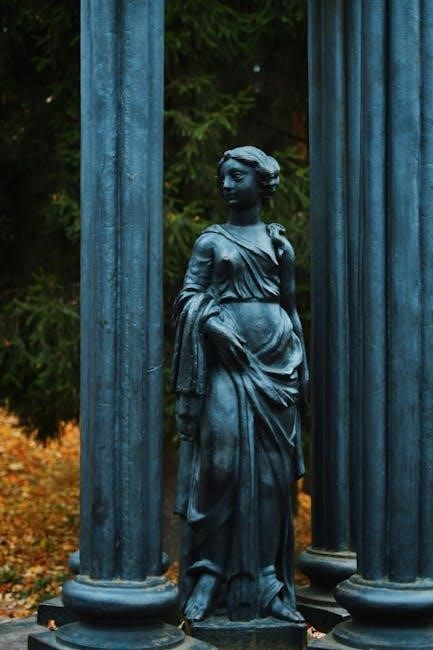ap european history study guide
Embark on a journey through European history‚ 1450 to today! This comprehensive guide offers study tips‚ essay strategies‚ and resources for AP Euro success;

A. Course Overview: 1450 to Present
AP European History delves into the fascinating narrative of Europe‚ beginning around 1450 and extending to the present day. This expansive timeframe allows for a deep exploration of pivotal cultural‚ economic‚ political‚ and social transformations. The course isn’t merely a recitation of dates and names; it’s about understanding how Europe evolved into the modern world we know today.
Students will analyze the Renaissance‚ Reformation‚ Age of Exploration‚ and the Enlightenment‚ tracing the roots of modern thought and governance. The course then navigates the tumultuous 19th and 20th centuries‚ encompassing industrialization‚ nationalism‚ world wars‚ and the Cold War. Mastering this broad scope requires focused study and a grasp of interconnected historical themes.
B. Exam Format Breakdown
The AP European History exam is structured to assess your understanding of European history through various question types. It comprises a combination of multiple-choice questions and free-response questions‚ demanding both factual recall and analytical skills. The multiple-choice section tests your knowledge with discrete questions‚ while the free-response section requires you to construct well-supported arguments.
Specifically‚ the exam includes document-based questions (DBQs) and long essay questions (LEQs). DBQs require analyzing provided documents‚ and LEQs demand constructing an argument based on your historical knowledge. Effective preparation involves practicing these question types and familiarizing yourself with the scoring rubrics to maximize your potential score.
C. Scoring and Weighting
Understanding the AP European History exam’s scoring is crucial for targeted preparation. The exam is scored out of a possible 75 points‚ with the multiple-choice section accounting for 40% of your final grade (30 points) and the free-response section contributing 60% (45 points). Each free-response question – the DBQ and LEQ – is worth an equal portion of the free-response score.
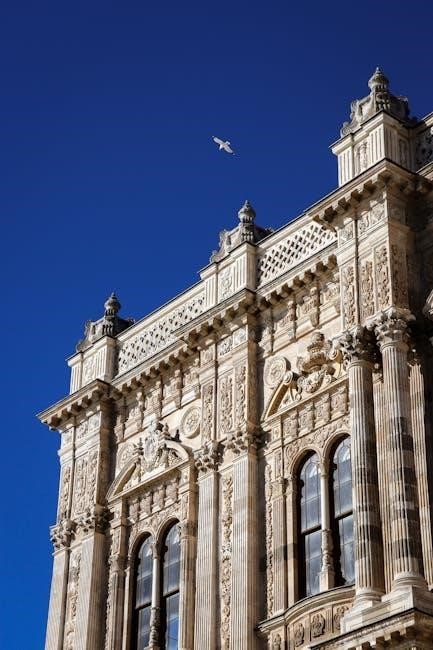
A score of 3 or higher is generally considered passing‚ potentially earning college credit. Achieving a 5 requires a deep understanding of the material and strong analytical writing skills. Prioritize mastering both content knowledge and exam techniques to optimize your score and demonstrate your historical expertise.
II. Renaissance and Reformation (1450-1648)
Delve into a transformative period! Explore Italian humanism‚ the Northern Renaissance‚ and the seismic shifts caused by Luther‚ Calvin‚ and the Counter-Reformation.
A. Italian Renaissance: Humanism & Art
The Italian Renaissance‚ a cultural rebirth‚ prioritized human potential and achievement. Humanism‚ emphasizing classical learning‚ profoundly impacted art‚ literature‚ and thought. Key figures like Petrarch and Machiavelli championed this new worldview.
Artistically‚ this era witnessed a flourishing of innovation. Masters such as Leonardo da Vinci‚ Michelangelo‚ and Raphael produced iconic works demonstrating realism‚ perspective‚ and classical influences. Patrons like the Medici family played a crucial role in funding these artistic endeavors.
Understanding the shift from medieval scholasticism to Renaissance humanism is vital. Explore how artistic techniques evolved and the impact of patronage on the creation of masterpieces. This period laid the foundation for modern Western thought and artistic expression.
B. Northern Renaissance & Christian Humanism
The Northern Renaissance‚ while inspired by Italy‚ developed its unique characteristics. Christian Humanism emerged‚ blending classical learning with Christian principles. Thinkers like Erasmus and Thomas More sought reform within the Church‚ advocating for a more personal and ethical faith.
Northern art often focused on detailed realism and everyday life‚ differing from the Italian emphasis on classical forms. Artists like Jan van Eyck and Albrecht Dürer mastered techniques like oil painting and engraving.
Key to understanding this period is recognizing the interplay between religious reform and humanist ideals. Explore how Northern humanists critiqued societal norms and contributed to the growing calls for change within the Church and broader European society.
C. The Protestant Reformation: Luther‚ Calvin‚ & Zwingli
The Protestant Reformation dramatically reshaped Europe‚ beginning with Martin Luther’s 95 Theses in 1517. Luther challenged papal authority and emphasized salvation through faith alone‚ sparking widespread religious upheaval.
John Calvin‚ another key reformer‚ developed the doctrine of predestination and established a theocratic government in Geneva. Ulrich Zwingli‚ in Switzerland‚ advocated for similar reforms‚ though differing from Luther on the Eucharist.
Understand the core tenets of each reformer’s theology and how their ideas spread through printing and political alliances. Analyze the social and political consequences of the Reformation‚ including religious wars and the fragmentation of Christendom.
D. Catholic Reformation & Counter-Reformation
The Catholic Church responded to the Protestant Reformation with its own internal reforms and a vigorous Counter-Reformation. The Council of Trent (1545-1563) reaffirmed Catholic doctrines‚ addressed abuses‚ and initiated seminaries to improve clergy education.
The Society of Jesus (Jesuits) played a crucial role in spreading Catholicism through missionary work and education. The Inquisition was strengthened to combat heresy‚ and the Index of Prohibited Books censored dissenting ideas.
Analyze the goals and methods of the Catholic Reformation and Counter-Reformation. Consider how these efforts impacted religious and political landscapes across Europe‚ and the lasting effects on Catholic-Protestant relations.
III. Age of Exploration & Absolutism (1648-1815)
Explore commercial revolutions‚ the rise of absolute monarchs like Louis XIV‚ and the transformative Scientific Revolution & Enlightenment periods!
A. Commercial Revolution & Mercantilism
The Commercial Revolution‚ beginning around 1600‚ dramatically reshaped European trade and finance. This period witnessed an expansion of overseas trade networks‚ fueled by the Age of Exploration‚ and a corresponding increase in commercial activity. Joint-stock companies‚ like the British East India Company‚ emerged as powerful economic entities‚ facilitating long-distance trade and investment.
Central to this era was mercantilism‚ an economic theory advocating for government intervention to maximize national wealth. Mercantilist policies emphasized accumulating gold and silver through a favorable balance of trade – exporting more than importing. Colonies played a crucial role‚ providing raw materials and serving as markets for manufactured goods. Navigation Acts‚ for example‚ restricted colonial trade to benefit the mother country. Understanding these shifts is vital for grasping the economic foundations of the period.
B. Rise of Absolutism: Louis XIV & Peter the Great
The 17th century saw the consolidation of absolute monarchies in Europe‚ exemplified by Louis XIV of France and Peter the Great of Russia. Louis XIV‚ the “Sun King‚” epitomized absolutism through his centralized control‚ lavish court at Versailles‚ and suppression of the nobility. He believed in the divine right of kings‚ asserting his authority was granted by God.
Peter the Great‚ similarly‚ sought to modernize Russia and strengthen its power. He implemented sweeping reforms‚ including military reorganization‚ administrative restructuring‚ and westernization efforts – adopting European technologies and customs. Both rulers aimed to eliminate challenges to their authority and establish centralized‚ autocratic states‚ fundamentally altering the political landscape of Europe.
C. Scientific Revolution & Enlightenment
The Scientific Revolution‚ beginning in the 16th century‚ challenged traditional beliefs about the universe. Figures like Copernicus‚ Galileo‚ and Newton emphasized reason‚ observation‚ and experimentation‚ leading to groundbreaking discoveries in astronomy‚ physics‚ and mathematics. This shift in thought paved the way for the Enlightenment‚ an 18th-century intellectual movement.
Enlightenment thinkers‚ such as Locke‚ Montesquieu‚ and Rousseau‚ championed ideas like natural rights‚ separation of powers‚ and social contracts. They advocated for reason‚ liberty‚ and progress‚ profoundly influencing political and social reforms across Europe and beyond‚ ultimately questioning absolute authority and inspiring revolutionary movements.
D. Enlightenment Philosophers: Locke‚ Montesquieu‚ Rousseau
John Locke‚ a key Enlightenment figure‚ articulated the concept of natural rights – life‚ liberty‚ and property – profoundly influencing political thought and revolutions. Montesquieu advocated for the separation of powers within government‚ proposing a system of checks and balances to prevent tyranny‚ impacting constitutional design.
Jean-Jacques Rousseau explored the social contract‚ arguing that government legitimacy stems from the consent of the governed‚ emphasizing popular sovereignty. These philosophers‚ through their writings‚ challenged traditional authority and championed individual freedoms‚ shaping modern political ideologies and inspiring calls for reform and revolution across Europe and the Americas.
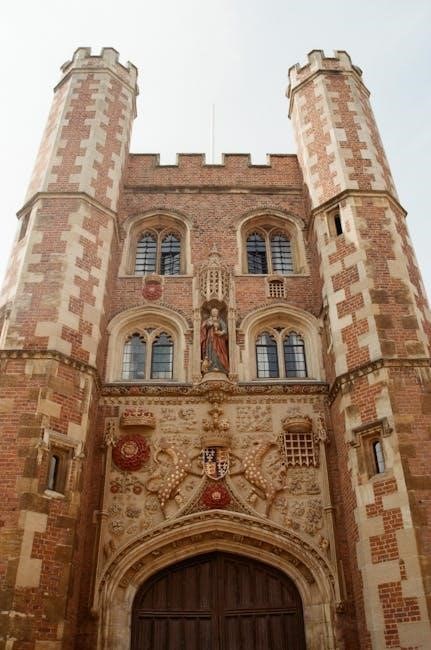
IV. Revolution & Napoleonic Era (1789-1815)
Explore the tumultuous period of revolution and Napoleon’s rise! Understand the causes‚ stages‚ and consequences of the French Revolution and Napoleonic conflicts.
A. French Revolution: Causes & Stages
Delve into the French Revolution’s complex origins! Explore the societal inequalities‚ economic hardships‚ and Enlightenment ideals that fueled revolutionary fervor. Understand the rigid social structure of the Estates-General and the financial crisis plaguing France under Louis XVI.
Trace the revolution’s key phases: From the moderate stage with the National Assembly and the Declaration of the Rights of Man‚ through the radical Reign of Terror led by Robespierre and the Jacobins‚ to the Directory’s attempt at stability.
Analyze pivotal events like the storming of the Bastille‚ the Women’s March on Versailles‚ and the execution of the king. Mastering these causes and stages is crucial for AP Euro exam success‚ providing context for subsequent European developments.

B. Napoleonic Wars & Congress of Vienna
Examine Napoleon’s rise and impact! Understand how his military genius and ambition led to the Napoleonic Wars‚ reshaping Europe through conquest and reform. Analyze key battles like Austerlitz and Trafalgar‚ and Napoleon’s domestic policies‚ including the Napoleonic Code.
Explore the consequences of Napoleon’s defeat and the subsequent Congress of Vienna (1814-1815). This pivotal event aimed to restore the balance of power in Europe‚ led by figures like Metternich.
Focus on the principles of legitimacy‚ compensation‚ and balance guiding the Congress. Grasp how the redrawing of European borders and the establishment of the Concert of Europe impacted the 19th century‚ setting the stage for future conflicts and ideologies.
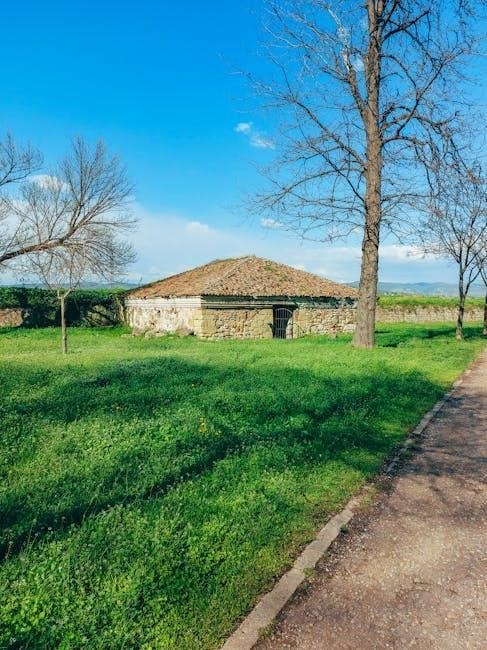
V. 19th Century: Industrialization & Ideologies (1815-1914)
Delve into a period of transformative change! Explore industrialization’s impacts‚ the rise of nationalism‚ and competing ideologies like liberalism and socialism.
A. Industrial Revolution: Impacts & Social Changes
The Industrial Revolution dramatically reshaped 19th-century Europe. From approximately 1760 to 1840‚ new technologies—like the steam engine and power loom—fueled unprecedented economic growth and societal shifts. This period witnessed a move from agrarian societies to urban‚ industrialized centers‚ creating new social classes and challenging traditional hierarchies.
Key impacts included mass production‚ increased trade‚ and the rise of factory systems. However‚ these advancements came with significant social costs. Urbanization led to overcrowding‚ pollution‚ and poor living conditions for many workers. New ideologies‚ such as socialism‚ emerged in response to the inequalities created by industrial capitalism‚ advocating for worker rights and social reform. Understanding these impacts is crucial for AP European History success.
B. Rise of Nationalism & Unification of Italy & Germany
The 19th century witnessed a surge in nationalist sentiment across Europe. This powerful ideology‚ emphasizing shared culture‚ language‚ and history‚ fueled movements for national unification in both Italy and Germany. Previously fragmented states sought to consolidate into unified nations‚ reshaping the political map of Europe.
Italy‚ under leaders like Cavour and Garibaldi‚ achieved unification through a combination of diplomacy and military campaigns. Similarly‚ Germany‚ guided by Bismarck’s “blood and iron” policy‚ unified through strategic wars and political maneuvering. These unifications dramatically altered the balance of power and laid the groundwork for future conflicts‚ making them essential topics for the AP European History exam.
C. Political Ideologies: Liberalism‚ Conservatism‚ Socialism
The 19th century was a breeding ground for competing political ideologies. Liberalism championed individual rights‚ constitutional government‚ and free markets‚ advocating for limited state intervention. Conversely‚ Conservatism prioritized tradition‚ social hierarchy‚ and established institutions‚ resisting radical change.
Socialism emerged as a response to the Industrial Revolution’s inequalities‚ advocating for collective ownership and social justice. These ideologies profoundly shaped political movements and reforms throughout the century. Understanding their core tenets – their proponents and criticisms – is crucial for analyzing 19th-century European history and succeeding on the AP exam. Recognizing how these ideologies clashed and coexisted is key.
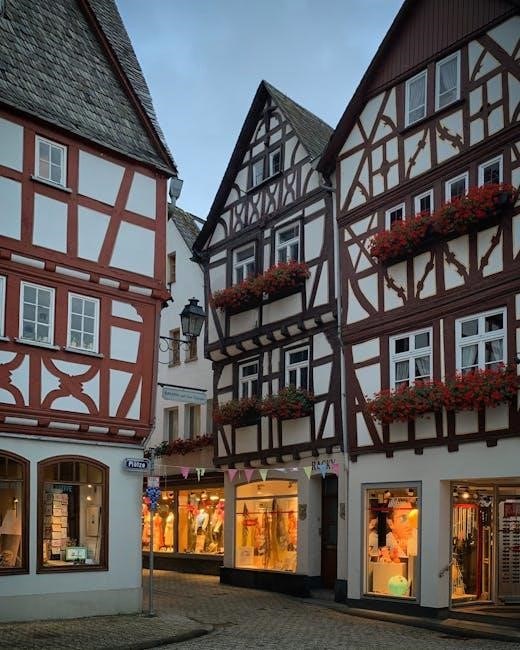
VI. 20th Century: War & Modernity (1914-Present)
Explore the tumultuous 20th century! From World Wars to the Cold War‚ and European integration‚ understand the forces shaping modern Europe today.
A. World War I: Causes‚ Course‚ & Consequences
Delve into the Great War’s complexities. Understand the tangled web of alliances‚ imperialism‚ nationalism‚ and militarism that ignited the conflict in 1914. Analyze the war’s progression – from the Western Front’s stalemate to the Eastern Front’s shifting battles and the introduction of devastating new technologies.
Examine the impact of total war on European societies‚ including economic mobilization‚ propaganda‚ and the changing roles of women. Crucially‚ explore the war’s far-reaching consequences: the collapse of empires (Austro-Hungarian‚ Ottoman‚ Russian)‚ the Treaty of Versailles’ harsh terms‚ and the seeds of future conflicts. Prepare to dissect primary sources and interpret historical debates surrounding this pivotal event.

B. Interwar Period: Rise of Fascism & Stalinism
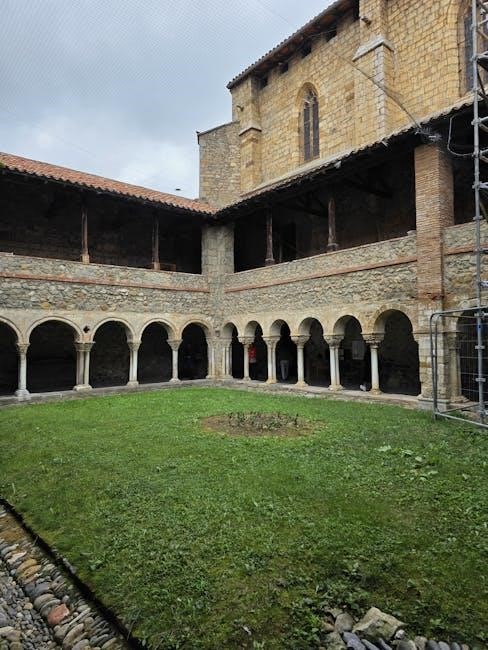
Navigate the turbulent years between World War I and II. Investigate the economic hardships‚ political instability‚ and social anxieties that fueled the rise of extremist ideologies in Europe. Analyze the core tenets of Fascism – its emphasis on nationalism‚ authoritarianism‚ and militarism – as exemplified by Mussolini’s Italy.
Simultaneously‚ explore the consolidation of Stalin’s totalitarian regime in the Soviet Union‚ focusing on collectivization‚ the Great Purge‚ and the cult of personality. Compare and contrast these two distinct yet equally oppressive systems‚ understanding their appeal and their devastating consequences for individual liberties and international peace.
C. World War II: Causes‚ Course‚ & Consequences
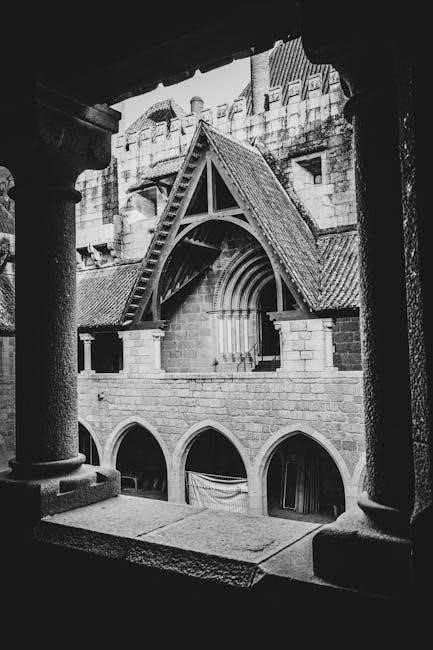
Delve into the global conflict that reshaped Europe and the world. Examine the long-term causes of WWII‚ including the unresolved issues from WWI‚ the rise of aggressive ideologies‚ and the failure of appeasement. Trace the war’s progression‚ from the initial blitzkrieg tactics to the Eastern Front’s brutal battles and the Allied invasion of Normandy.
Analyze the Holocaust‚ a systematic genocide‚ and its profound impact. Finally‚ assess the war’s far-reaching consequences: the emergence of the United States and the Soviet Union as superpowers‚ the beginning of the Cold War‚ and the formation of international organizations like the United Nations.
D. Cold War & European Integration
Explore the decades-long geopolitical struggle between the East and West. Investigate the origins of the Cold War‚ including ideological differences‚ the arms race‚ and proxy conflicts like the Korean and Vietnam Wars. Analyze key events such as the Berlin Blockade‚ the Cuban Missile Crisis‚ and the fall of the Iron Curtain.
Simultaneously‚ examine the process of European integration‚ beginning with the European Economic Community and evolving into the European Union. Understand the motivations behind integration – economic recovery‚ political stability‚ and a desire to prevent future conflicts – and its impact on national sovereignty and European identity.
